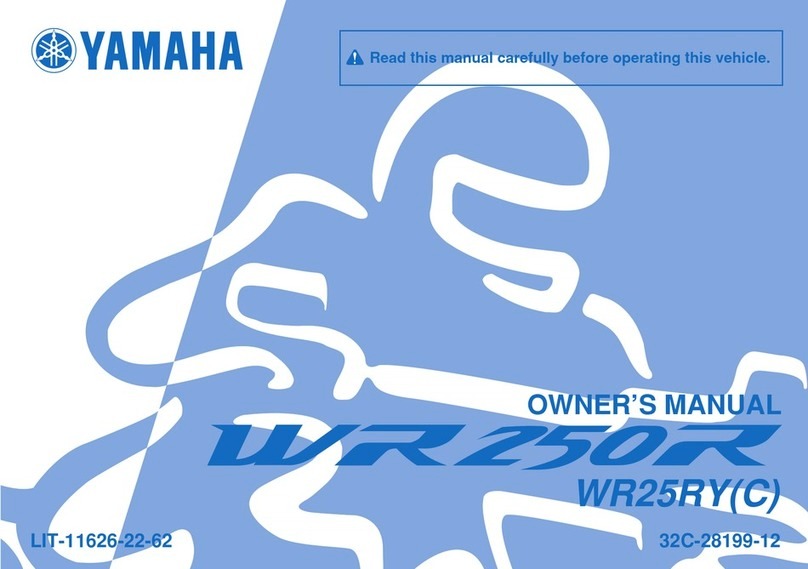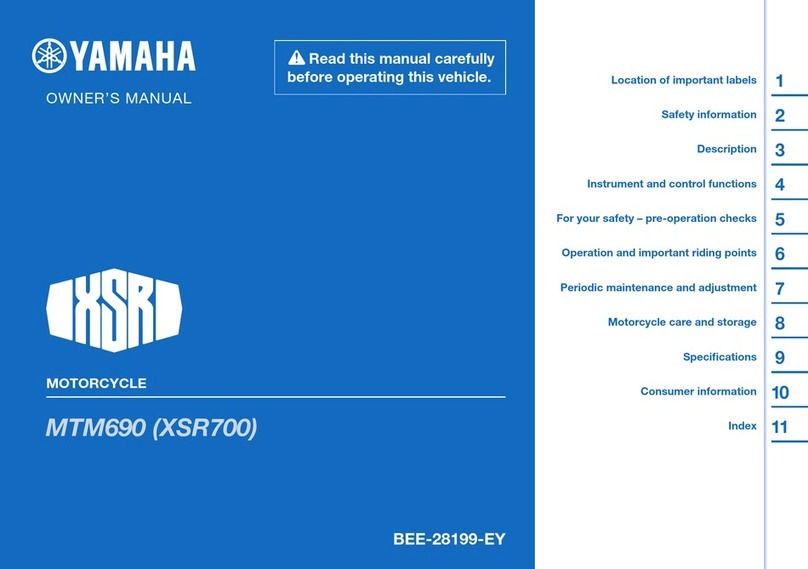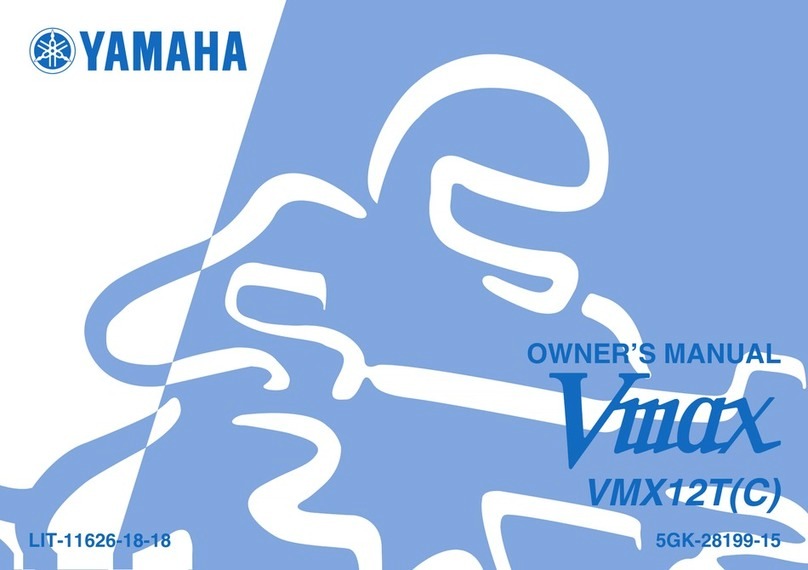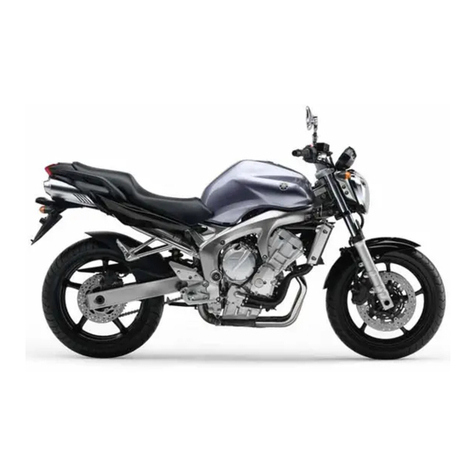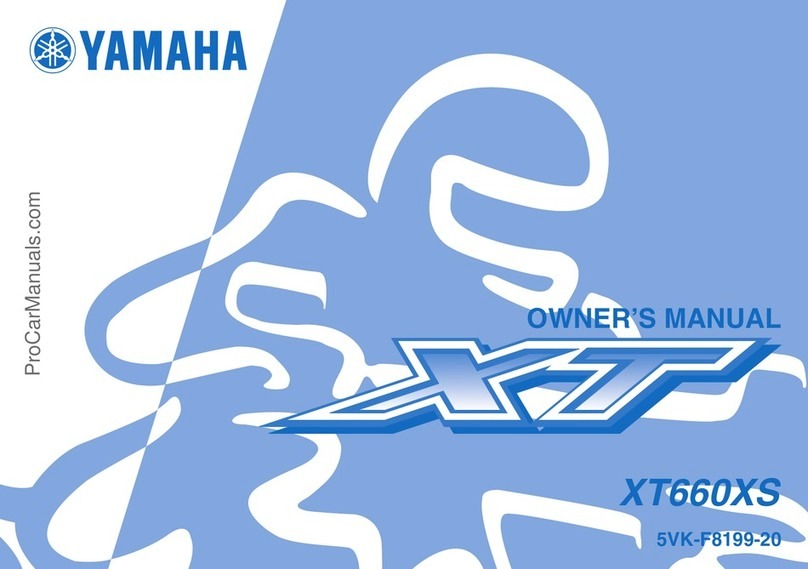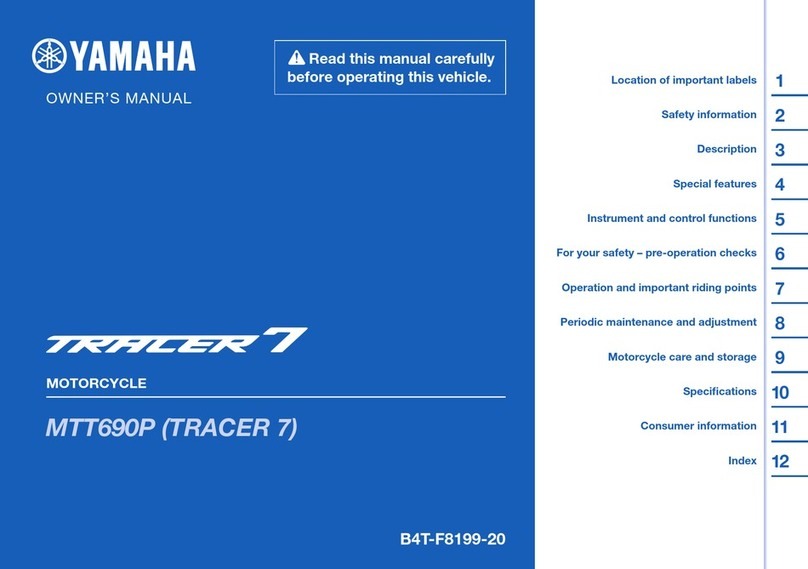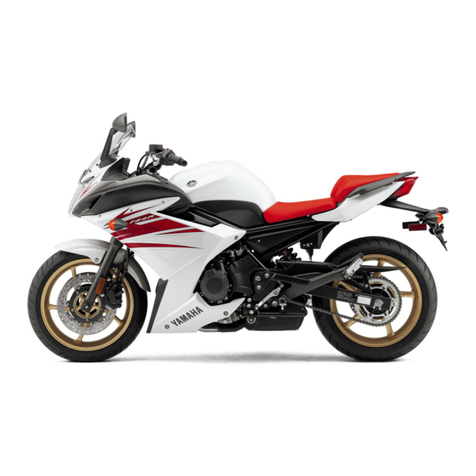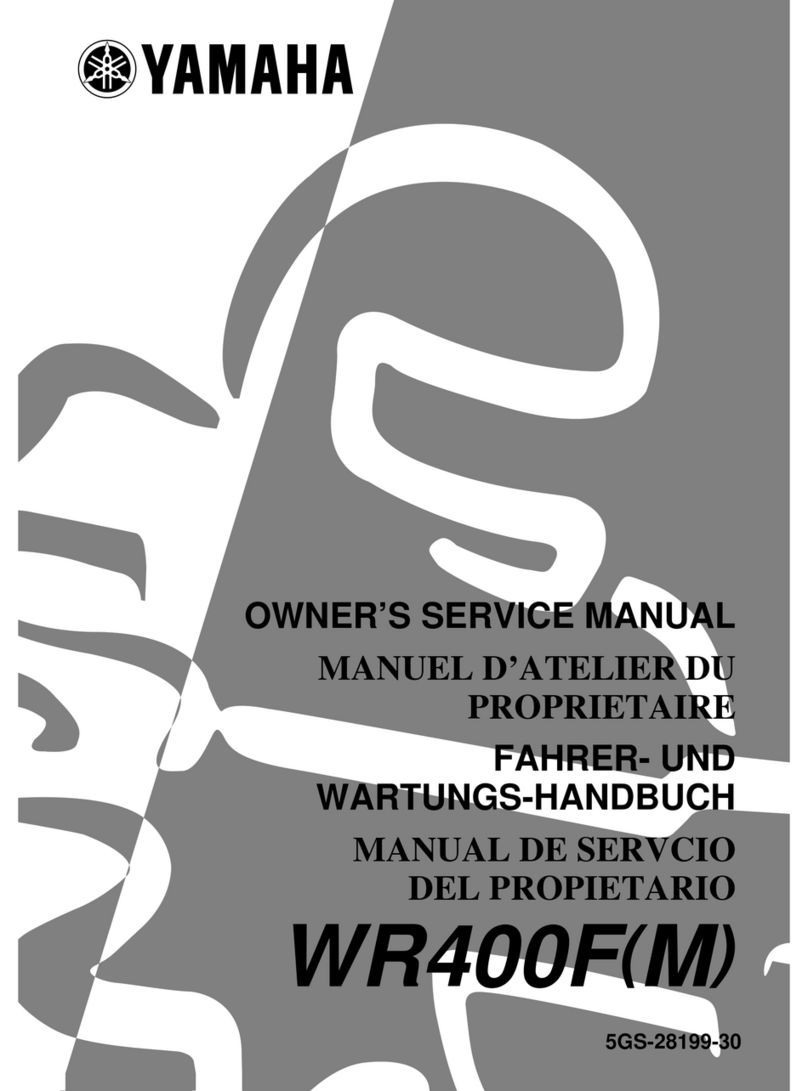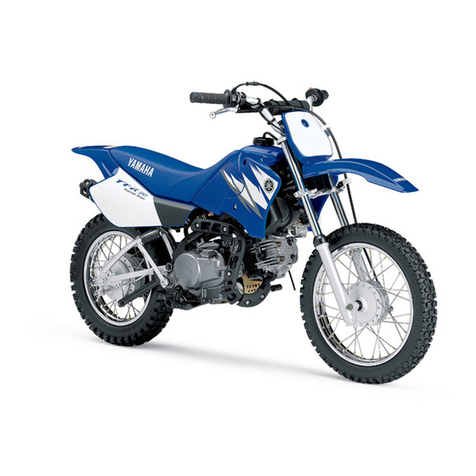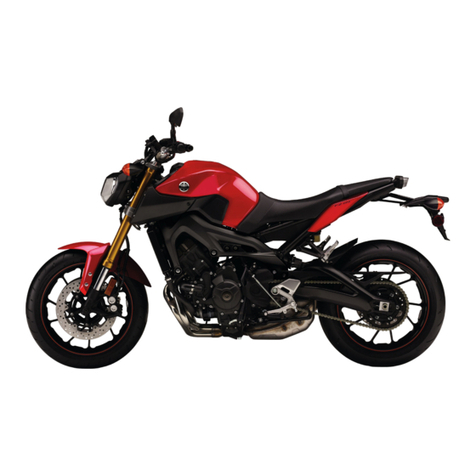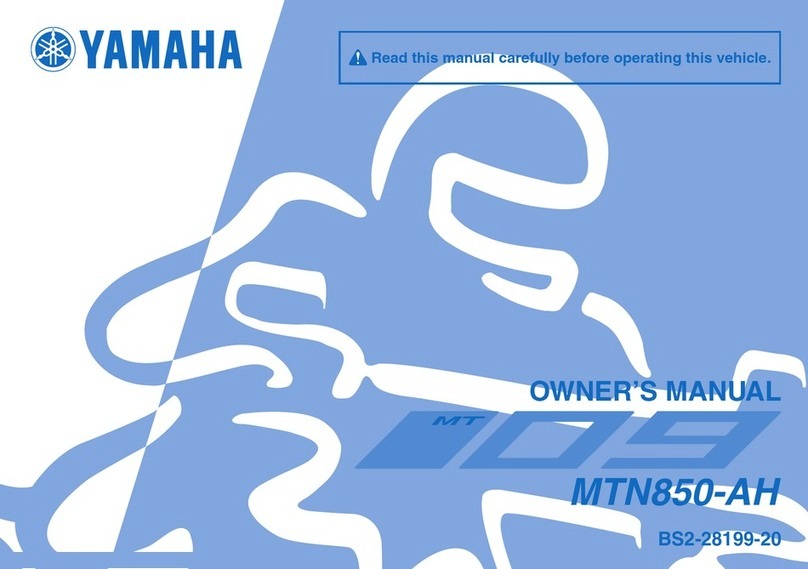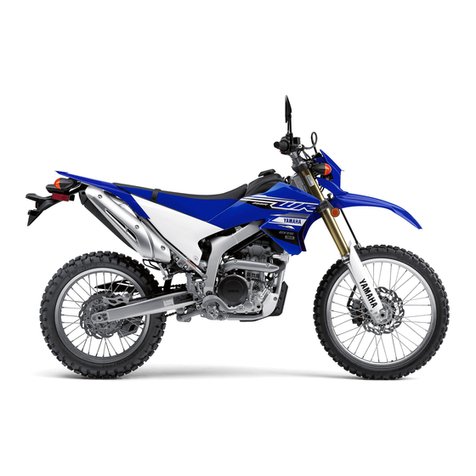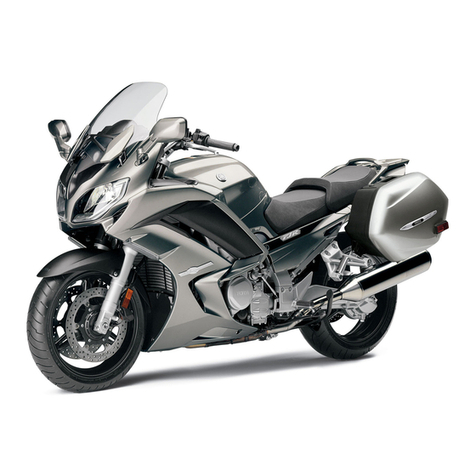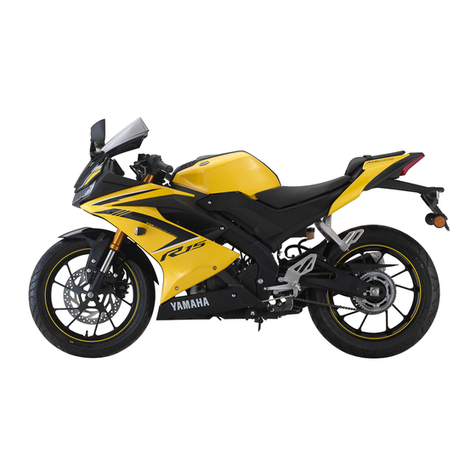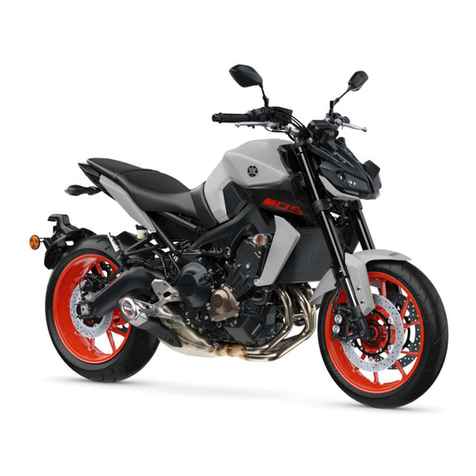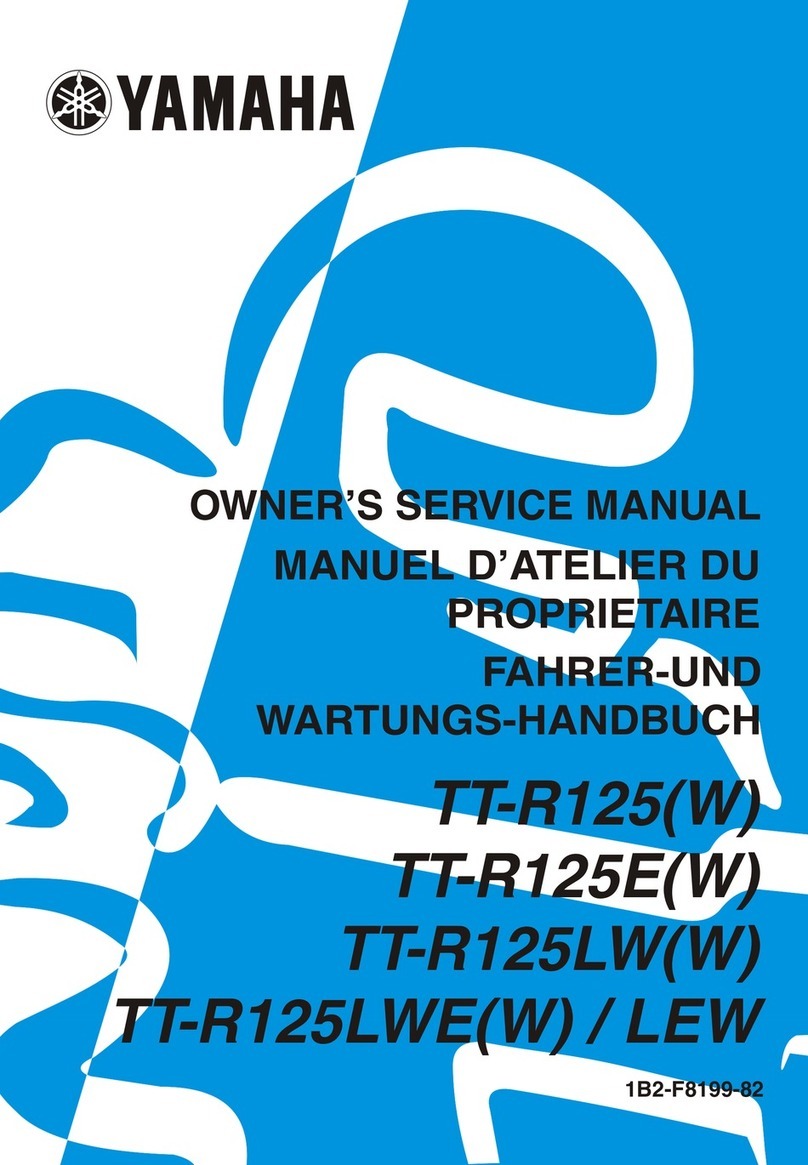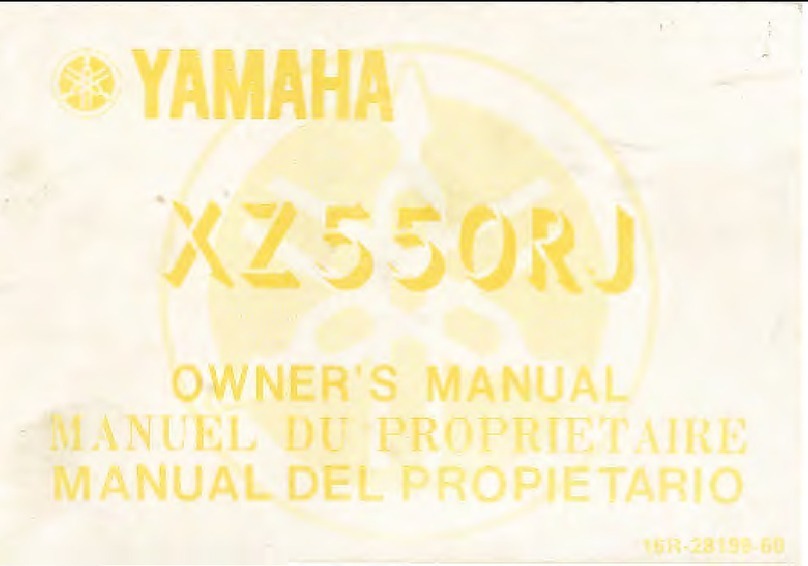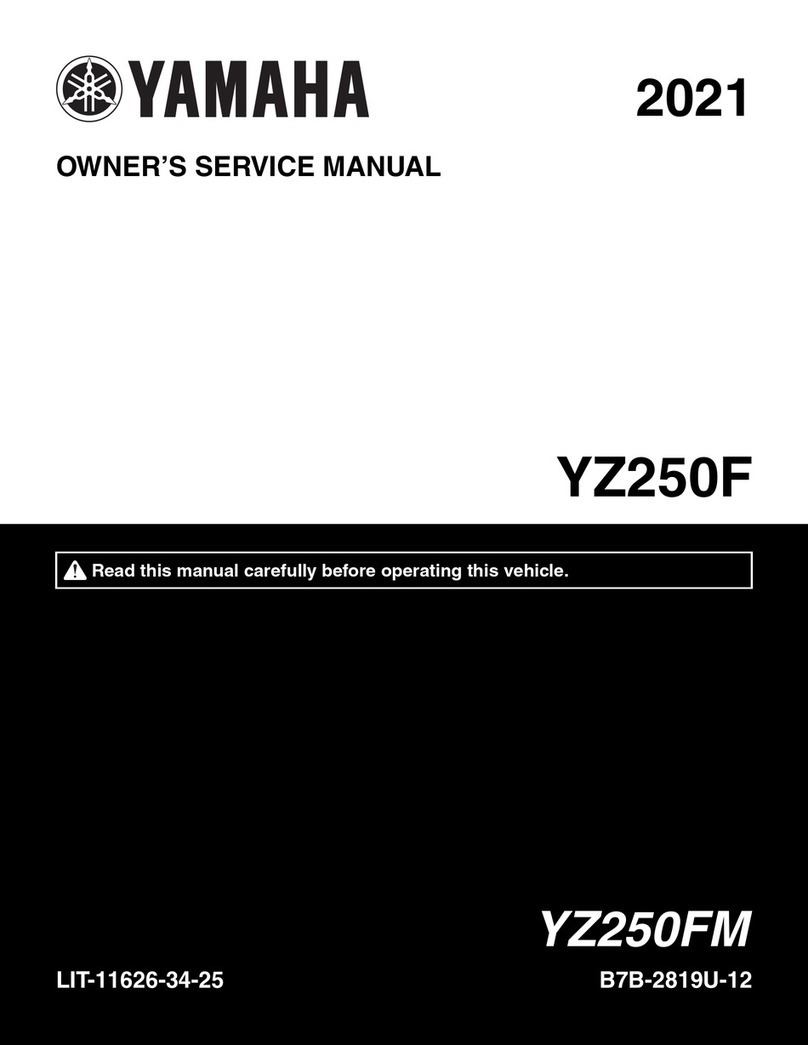
TABLE OF CONTENTS
SAFETY INFORMATION ..................1-1
Location of important labels ............1-5
DESCRIPTION ..................................2-1
Left view ..........................................2-1
Right view ........................................2-2
Controls and instruments.................2-3
INSTRUMENT AND CONTROL
FUNCTIONS .......................................3-1
Main switch/steering lock ................3-1
Indicator and warning lights ............3-2
Speedometer unit ...........................3-3
Cruise control system .....................3-5
Handlebar switches ........................3-6
Clutch lever .....................................3-7
Shift pedal .......................................3-8
Brake lever .....................................3-8
Brake pedal ....................................3-8
Fuel tank cap ..................................3-9
Fuel .................................................3-9
Fuel cock ......................................3-10
Starter (choke) knob .....................3-11
Locking the steering with a
padlock ......................................3-12
Rider seat .....................................3-12
Passenger backrest ......................3-13
Helmet holder ...............................3-14
Windshield ....................................3-15
Sidecases .....................................3-16
Adjusting the front fork ..................3-17
Adjusting the shock absorber
assembly ................................... 3-17
Sidestand ..................................... 3-18
Ignition circuit cut-off system ........3-19
Auxiliary DC connector ................. 3-21
PRE-OPERATION CHECKS ............. 4-1
Pre-operation check list .................. 4-2
OPERATION AND IMPORTANT
RIDING POINTS................................. 5-1
Starting and warming up a cold
engine ......................................... 5-1
Starting a warm engine .................. 5-2
Shifting ........................................... 5-3
Tips for reducing fuel
consumption ............................... 5-3
Engine break-in .............................. 5-4
Parking ........................................... 5-4
PERIODIC MAINTENANCE AND
MINOR REPAIR ................................. 6-1
Owner’s tool kit ............................... 6-1
Periodic maintenance and
lubrication chart .......................... 6-2
Removing and installing cowlings
and panels .................................. 6-6
Checking the spark plugs ...............6-9
Engine oil and oil filter cartridge ... 6-10
Final gear oil ................................. 6-13
Coolant ......................................... 6-14
Cleaning the air filter elements .... 6-16
Adjusting the carburetors ............. 6-17
Adjusting the engine idling
speed ........................................ 6-18
Checking the throttle cable free
play ........................................... 6-18
Valve clearance ........................... 6-19
Tires ............................................. 6-19
Cast wheels ................................. 6-21
Clutch lever .................................. 6-22
Adjusting the brake lever free
play ........................................... 6-22
Adjusting the rear brake light
switch ....................................... 6-23
Checking the front and rear brake
pads .......................................... 6-23
Checking the brake and clutch
fluid levels ................................. 6-24
Changing the brake and clutch
fluids ......................................... 6-25
Checking and lubricating the
cables ....................................... 6-25
Checking and lubricating the
throttle grip and cable ............... 6-26
Checking and lubricating the
brake and shift pedals .............. 6-26
Checking and lubricating the
brake and clutch levers ............ 6-27
Checking and lubricating the
sidestand .................................. 6-27
Checking the front fork ................. 6-27
U2C422E0.book Page 1 Wednesday, July 12, 2006 9:16 AM
ProCarManuals.com
